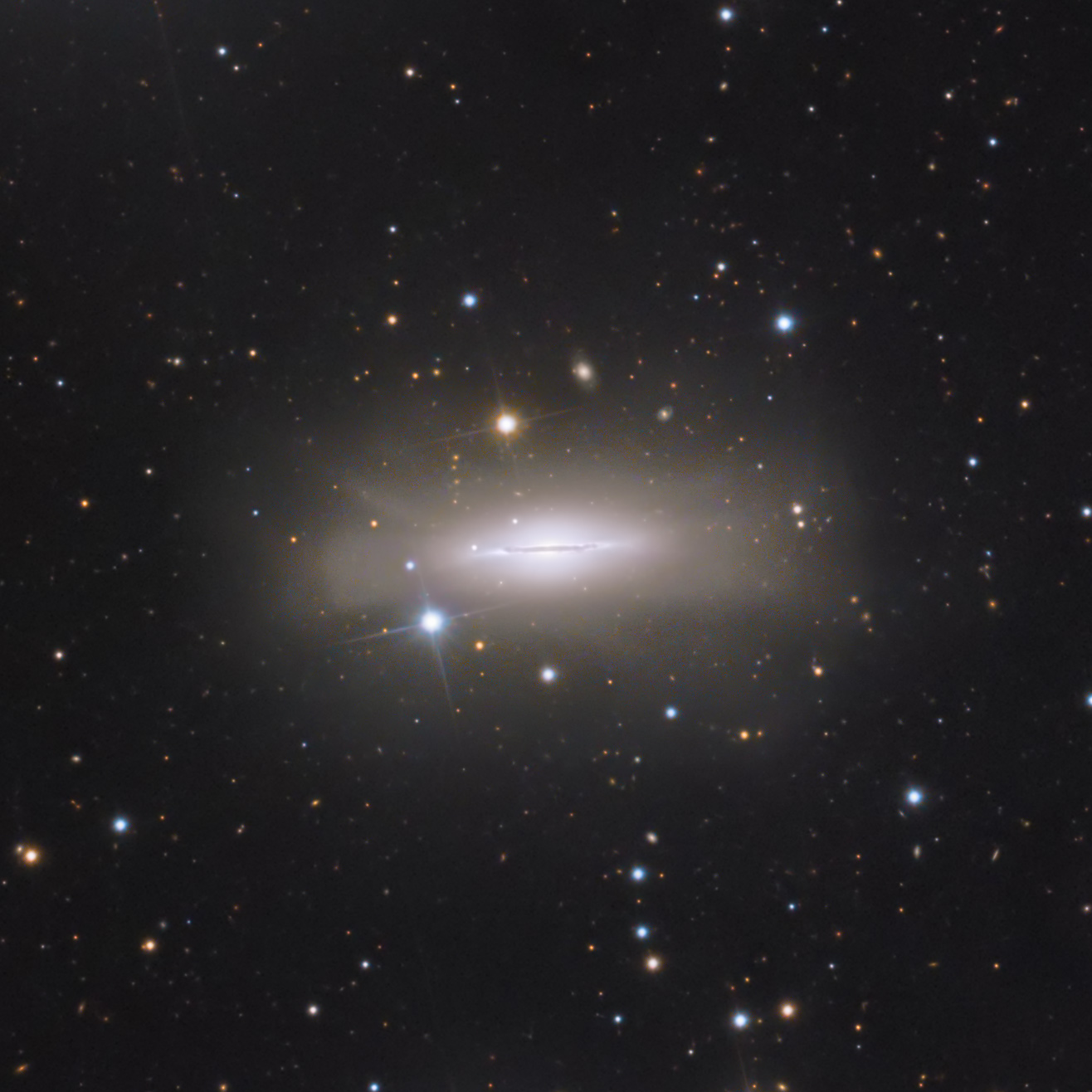

NGC5866: This is a magnitude 10.7 lenticular (maybe; see next sentence) galaxy (essentially, a spiral galaxy without arms) in Draco, presenting to us edge-on. "Maybe" because of the
prominent dust lane that bisects the galaxy, which is highly unusual for a lenticular galaxy; there is thought that NGC5866 actually is a spiral galaxy (which would explain the dust lane), that collided
with another galaxy, resulting in this unusual shape (with the stars puffing out above and below the galactic plane). It is thought by many that NGC5866 also is M102, but that is uncertain.
The prominent dust lane almost bisects the disc, with a very slight angle from the long axis of the galaxy. It is estimated to be approximately 44 million light years from earth, and approximately
60,000 light years in diameter (a little over half that of our Milky Way galaxy), with a mass about the same as our Milky Way. NGC5866 is part of a galaxy group which
includes NGC5907.
This galaxy has a small apparent size due to its distance; I also have presented the photo in a few uncropped versions, which I like because of all the interesting things (mostly small background
galaxies) any wife-field image shows.
A bizarre thing, to me, about this galaxy is that very, very few images (not even imagages taken with Spitzer and Hubble) show the halo that surrounds the galaxy, even though the structure is evident
even on my integrated luminance image before any post-processing.
This is the second time I have imaged this target. I had imaged it seventeen years earlier from my yard. If you want to compare that image to this one (to see what much darker skies, better equipment,
and (hopefully) more skill can do, click here.
Copyright 2020 Mark de Regt